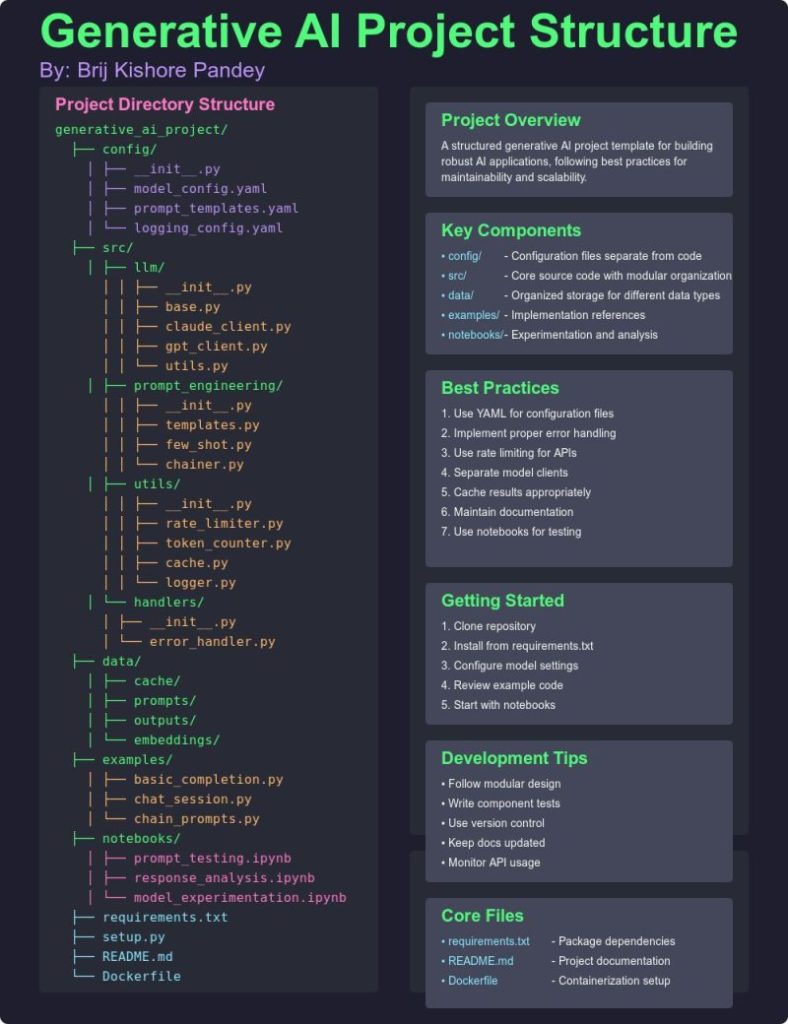When working with multiple LLM providers, managing prompts, and handling complex data flows — structure isn’t a luxury, it’s a necessity.
A well-organized architecture enables:
→ Collaboration between ML engineers and developers
→ Rapid experimentation with reproducibility
→ Consistent error handling, rate limiting, and logging
→ Clear separation of configuration (YAML) and logic (code)
𝗞𝗲𝘆 𝗖𝗼𝗺𝗽𝗼𝗻𝗲𝗻𝘁𝘀 𝗧𝗵𝗮𝘁 𝗗𝗿𝗶𝘃𝗲 𝗦𝘂𝗰𝗰𝗲𝘀𝘀
It’s not just about folder layout — it’s how components interact and scale together:
→ Centralized configuration using YAML files
→ A dedicated prompt engineering module with templates and few-shot examples
→ Properly sandboxed model clients with standardized interfaces
→ Utilities for caching, observability, and structured logging
→ Modular handlers for managing API calls and workflows
This setup can save teams countless hours in debugging, onboarding, and scaling real-world GenAI systems — whether you’re building RAG pipelines, fine-tuning models, or developing agent-based architectures.
→ What’s your go-to project structure when working with LLMs or Generative AI systems?
Let’s share ideas and learn from each other.
